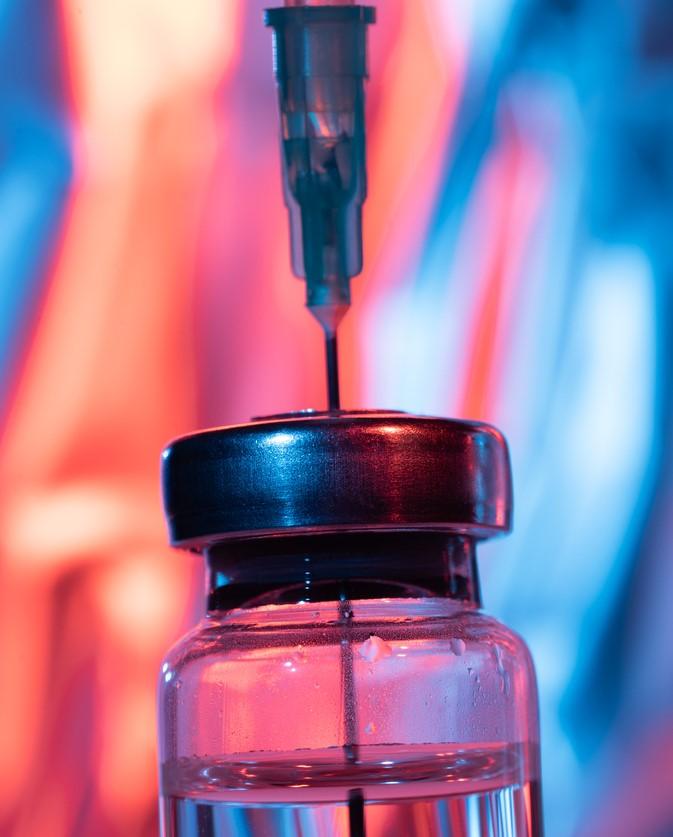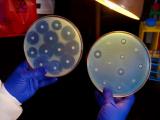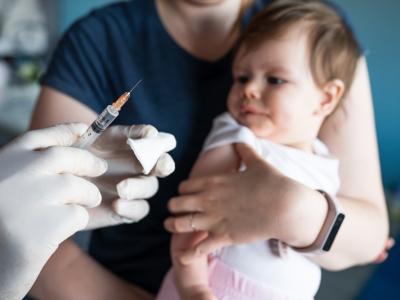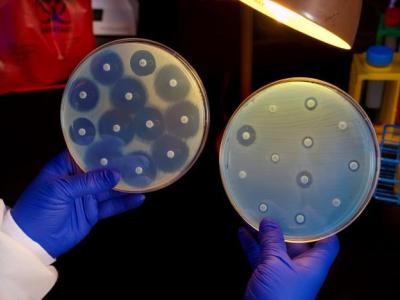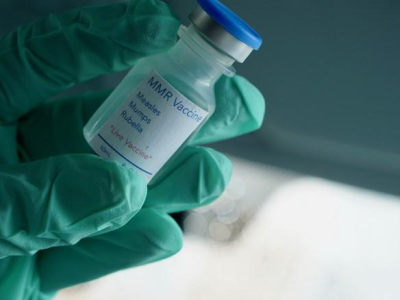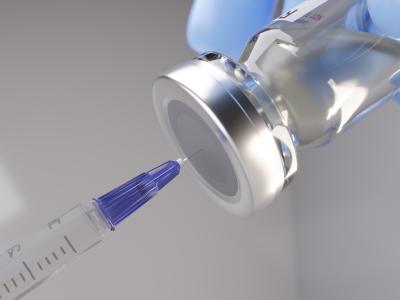The World Health Organization (WHO) today released its first-ever report on the pipeline for vaccines to combat antimicrobial resistance (AMR).
The analysis, which focuses on vaccines in development against the drug-resistant bacterial pathogens that the WHO has deemed the greatest threats to global public health, identified 61 candidates in various stages of clinical development, and 94 in preclinical development. Among those candidates are vaccines in the late stages of development that would address some of the resistant pathogens that are leading causes of deaths associated with AMR.
But for some of the deadliest hospital-associated, multidrug-resistant (MDR) pathogens, there are few candidates, and many are years away from becoming a reality. For some of them, development of a vaccine may be unlikely.
The report also notes that while highly vaccines for three priority bacterial pathogens already exist, they aren't being distributed widely enough in the countries that need them the most.
WHO officials say that with resistance growing to every antibiotic that has ever been introduced, AMR is becoming a leading cause of death globally and a threat to many modern medical procedures that rely on effective control of secondary bacterial infections. And with the current antibiotic pipeline relatively short on new candidates, vaccines have become a "highly attractive" tool that should be part of a sustainable response to AMR.
"Vaccines are instrumental tools in preventing infections, both susceptible infections and resistant infections, and therefore it stands clear that vaccines are an important tool in curbing AMR through reducing the incidence of infection but also through reducing overall use and misuse of antimicrobials," Hatim Sati, PhD, MPH, technical officer with the WHO's AMR Division, said at a press conference. "We are hoping this analysis will inform research and development, will inform investment decisions, [and] will inform policies and action as well."
High-feasibility vaccines
The report breaks down the vaccines and priority pathogens into four broad categories based on the progression of candidates in the pipeline and assessments of the feasibility of generating a vaccine. In the "very high" pipeline feasibility group are pathogens for which vaccines already exist—Salmonella enterica serovar Typhi (typhoid), Streptococcus pneumoniae, Haemophilus influenzae type b (Hib), and Mycobacterium tuberculosis (TB).
While the current TB vaccine is not considered effective and other candidates are in development, the three others in this group are highly effective, said Isabel Frost, PhD, a consultant with the WHO's Department of Immunization, Vaccines & Biologicals. The report notes, for example, that 5 years after the pneumococcal conjugate vaccine (PCV) was introduced in the United States, invasive pneumococcal disease caused by MDR strains in children under 2 were reduced by 84%.
But Frost said PCVs haven't been distributed equitably. A recent paper in the Lancet Infectious Diseases estimated that only 49% of children globally receive a PCV.
"Streptococcus pneumoniae is still one of the leading causes of death due to resistant bacteria, and it caused 122,000 deaths in 2019," she said. "And of course these deaths are concentrated in the countries that have the lowest levels of access, not only to vaccines, but to antibiotics and other health services."
Likewise, WHO technical officer Mateusz Hasso-Agopsowicz, PhD, noted that only a handful of countries have introduced the typhoid conjugate and Hib vaccines. "Many challenges remain to increase the coverage of existing vaccines, especially to reach the most vulnerable populations in the low- and middle-income countries where these vaccines are needed the most," he said.
The report calls for increased coverage with these vaccines and suggests that research into even more effective vaccines for these pathogens should focus on candidates with broader targets and lower development and production costs. It also recommends accelerating development of the TB vaccine candidates in the clinical pipeline.
Candidates in the "high" feasibility group include vaccines targeting extraintestinal pathogenic Escherichia coli (ExPEC), Salmonella enterica serovar Paratyphi A, Neisseria gonorrhoeae, and Clostridioides difficile. Each of these pathogens has multiple candidates in clinical development, including one each in phase 3 clinical trials.
"Though some of these vaccine candidates are in advanced stages of development, of course they are not all going to reach the market or be available in the very near future," Frost said, noting that trials take a long time and failure rates in vaccine development are high.
Hasso-Agopsowicz said that once some of these vaccines have been proven safe and effective, the WHO and other stakeholders will have to work with countries so they can get a better understanding of which countries have the greatest need. As an example, he cited the current typhoid conjugate vaccine, which has been around for 20 years but has had slow uptake because many countries didn't know they had a high burden of typhoid infections and didn't see the value of the vaccine.
But that is changing as typhoid becomes increasingly resistant to multiple classes of antibiotics.
"Now countries are seeing there is really a value proposition for them to use that vaccine, so that they can prevent typhoid infections and prevent resistant outbreaks," he said.
Hospital-acquired pathogens pose challenges
The third and fourth ("moderate" and "low" feasibility) groups include priority pathogens for which a vaccine candidate has been identified but is in the early stages of clinical development—including Klebsiella pneumoniae, Shigella, and non-typhoidal Salmonella—and those for which no candidate has been identified and may never be because they're not considered a feasible solution.
These include high-priority pathogens like Acinetobacter baumannii, Pseudomonas aeruginosa, Enterococcus faecium, Enterobacter spp., Helicobacter pylori, Campylobacter spp., and Staphylococcus aureus, many of which are acquired in hospitals.
"Unfortunately, with these types of infections come significant challenges to vaccine development," Frost said.
Among these challenges, Sati explained, is the difficulty of designing clinical trials and defining the target populations for hospital-acquired pathogens, which tend to occur in a relatively small population of critically ill, high-risk patients who spend several weeks in hospitals and intensive care units (ICUs).
"The challenge becomes if you develop a vaccine, or there is a candidate, how do you test it? When do you introduce it? Who takes it?" he said. "And how do you measure the effect in patients who have been pre-treated with multiple antimicrobials?"
In addition, Sati said, vaccine trials usually require many participants to make inferences about their efficacy.
Because of these challenges, Sati said the WHO does not see vaccines as a viable solution for highly-resistant, hospital-acquired pathogens in the near future. Instead, the focus will need to be on alternative approaches over the next 5 to 10 years to buy some time for vaccine development. That includes new antibiotics, stricter infection prevention and control measures, antimicrobial stewardship, and access to rapid diagnostics and antimicrobial susceptibility testing.
But Frost is optimistic that some of the challenges involved in developing vaccines for these priority pathogens can be overcome. For example, researchers might find ways to identify people who are at high risk of developing a hospital-acquired infection in the future and target them for vaccination before they go in for surgery or enter an ICU.
"I think we can get better at identifying these high-risk populations that are likely to be effected by hospital-acquired infections," she said.
The report concludes that increased funding and innovative vaccine approaches, like the mRNA technology that has enabled quick development of COVID-19 vaccine, will be needed to boost the bacterial vaccine pipeline.
